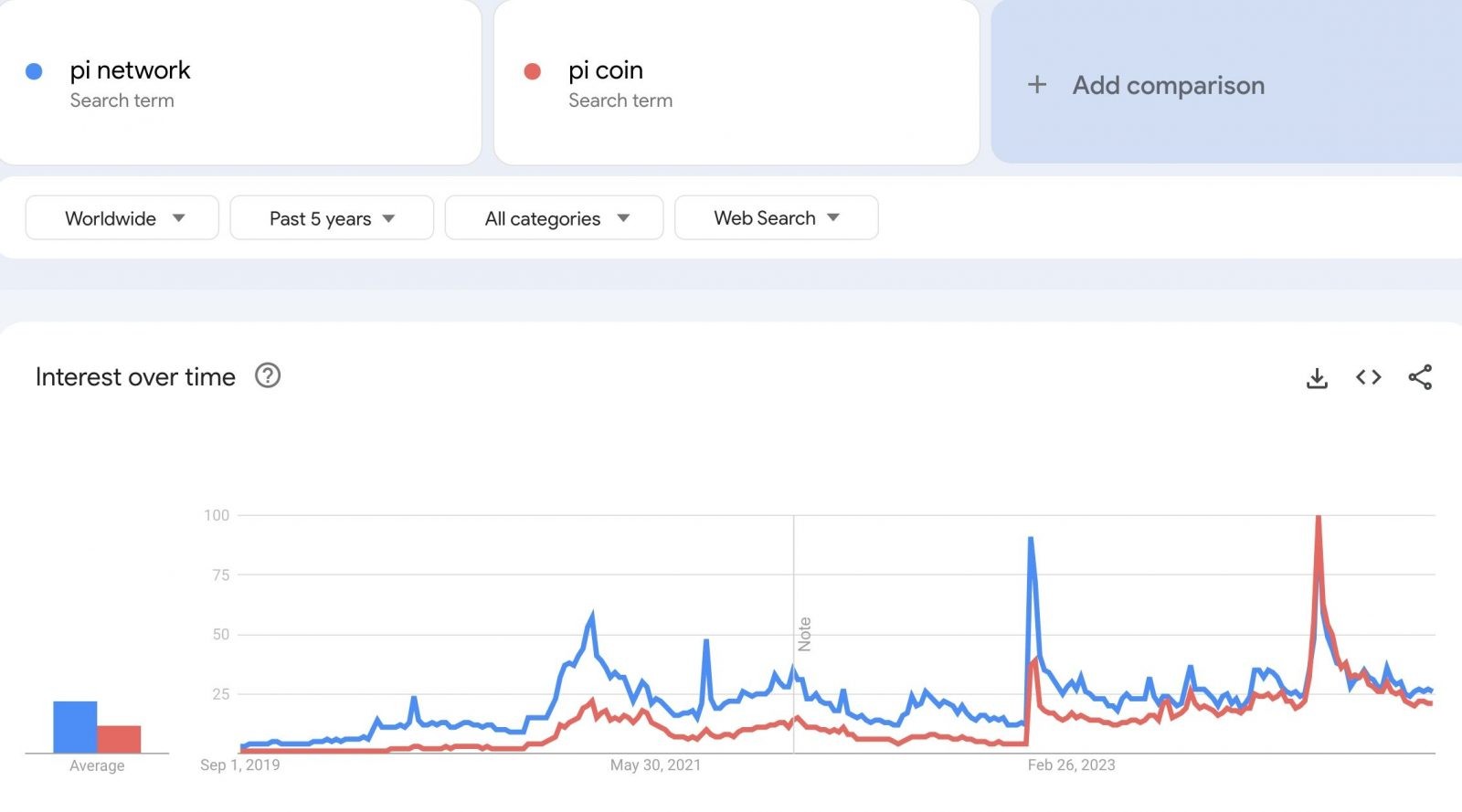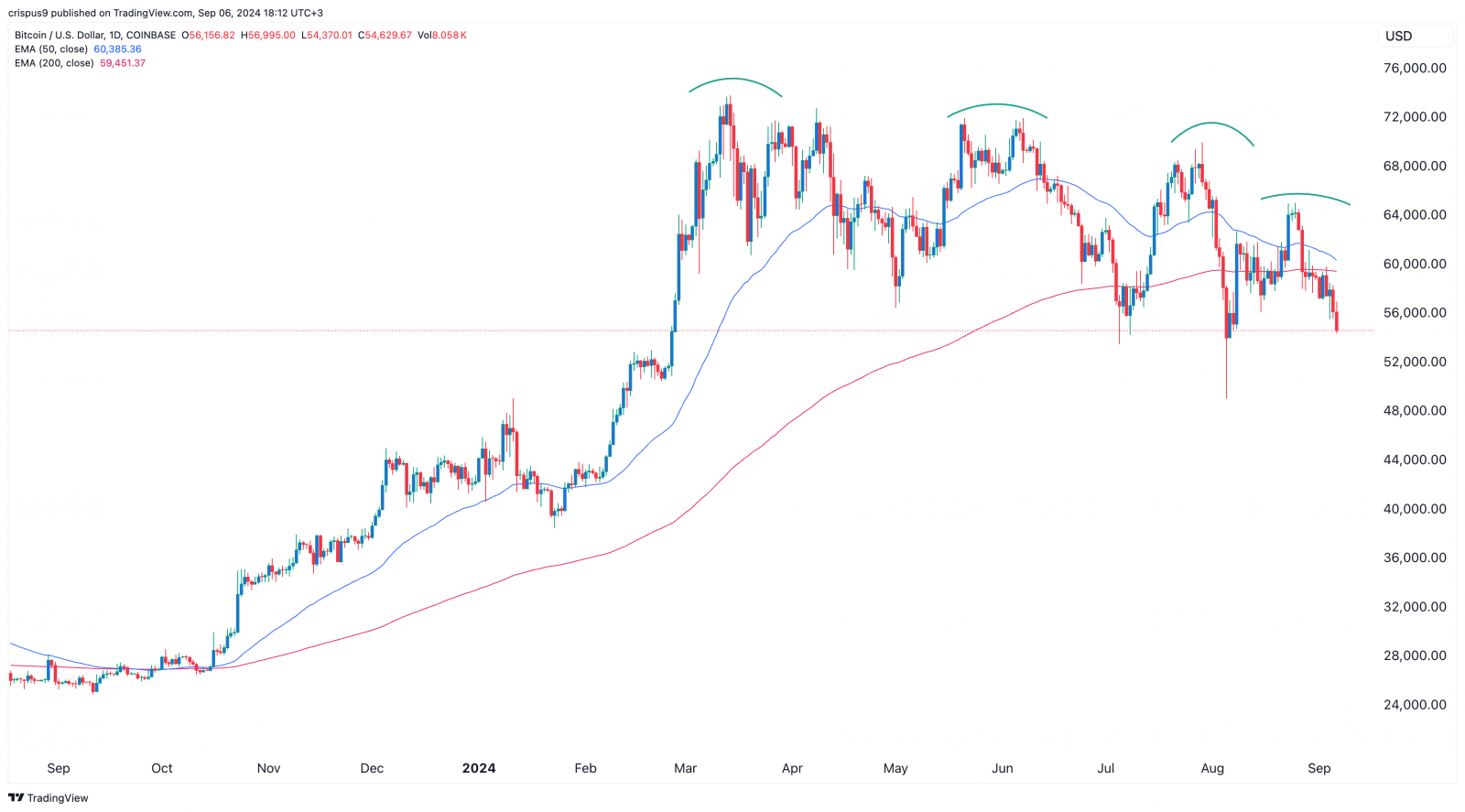4 reasons why Pi Network mainnet launch may not happen soon

Pi Network, the viral tap-to-earn platform, is running out of steam as it marks five years of existence. Data shows that Google search terms for the keywords ‘Pi Network’ and ‘Pi coin’ have nosedived after peaking earlier this year. Social media mentions have also retreated sharply in the past few years.

Additionally, the Pi Network IoU, which was unveiled – and disowned by the developers – has crashed to a record low and is seeing little to no interest among investors.
A key concern among Pi pioneers is that the network has remained in an enclosed mainnet for many years, meaning that their accumulated tokens are still worthless.
The developers have noted that the token launch or airdrop will happen either in 2024 or in 2025 if they hit key milestones. Still, amidst this delay, I believe the Pi Network mainnet launch will not happen this year for several reasons.
Cryptocurrency prices have nosedived
One of the three conditions necessary for the Pi Network mainnet launch is a conducive market environment. In other words, cryptocurrencies need to be in a strong uptrend for this launch to happen.
This is a common thing in the financial market, especially when companies are considering launching their Initial Public Offerings (IPO). In most cases, these firms prefer to list when stocks are in a strong bull run, as we saw in 2021.
The idea is that their stocks too will surge when they eventually list. In Pi Network’s case, there is a risk that the ongoing crypto crash will continue for a while since, as shown below, there are signs that Bitcoin is about to form a death cross pattern. In most cases, this pattern leads to more downside, as we saw in 2022.
There is also a likelihood that we are now entering a crypto winter, which could be prolonged until the next halving season. The last crypto winter happened between November 2021 to January 2023.

Developers ads earnings
The other reason why the Pi Network mainnet launch may not happen is because it is in the developers interest to keep it in the enclosed mainnet for longer.
For starters, Pi Network is a platform that lets users earn tokens by just clicking a button on the application. New tokens are generated when they see an advert. In this case, these ad dollars go to the team and pioneers don’t get to share a bit.
Therefore, the developers will likely leave it in the enclosed mainnet as long as adequate people are clicking the button. Then, the mainnet launch will happen after the numbers fall dramatically. In other words, they want to milk the cow dry.
Lessons from Telegram tap-to-earn tokens
Additionally, developers have learned a lesson from the highly popular tap-to-earn tokens like Pixelverse (PIXFI), Hamster Kombat (HMSTR), and Notcoin that have millions of users. Hamster has over 300 million users from around the world.
Pixelverse and Notcoin tokens have all plunged after their airdrops a few months ago. Notcoin was trading at $0.0074 on Friday, down by over 74% from its highest level this year, shedding over $1.5 billion in market cap.
Pixelverse token has also crashed to $0.0076, down by over 93% from its all-time high. Hamster Kombat’s pre-market futures have also plunged to a record low ahead of the airdrop later this month.
Therefore, Pi Network’s developers believe that the token may also do the same when it finally launches in exchanges. Besides, they have all watched the Pi coin IOU tumble after its high-profile launch in 2022.
Ecosystem target hard to meet
As part of their launch conditions, the developers have also said that they want to ensure that there is an active ecosystem of applications in the network. The goal is to ensure that Pi Coin does not become merely another crypto. Instead, they want it to have a vibrant ecosystem, which will give it utility.
As part of the launch conditions, the developers hope to have at least 100 dApps in the ecosystem. This will be a very difficult thing to achieve now that developers are considering popular chains like Ethereum, Arbitrum, and Solana to build their dApps.
It is unclear how many Pi dApps exist today. However, this repositoryputs the number at less than 40, meaning that they need over 60 more. Launching a dApp is one thing and making it popular is another.
Summary
Pi Network had a lot of promise when it was launched initially, which explains why it grew its users to over 50 million within a few months. A lot has changed in the last five years. For one, thanks to Telegram, it has become relatively easier for users to build their tap-to-earn platforms.
Therefore, there is a likelihood that the Pi Network mainnet launch will not happen this year and even in 2025.
Remember, Pi Network is in the crypto industry, a largely unregulated sector, meaning that statements by the developers should not be taken at face value.
The post 4 reasons why Pi Network mainnet launch may not happen soon appeared first on Invezz





 Bitcoin
Bitcoin  Ethereum
Ethereum  Tether
Tether  USDC
USDC  Dogecoin
Dogecoin  TRON
TRON  Cardano
Cardano  Bitcoin Cash
Bitcoin Cash  Chainlink
Chainlink  LEO Token
LEO Token  Litecoin
Litecoin  Dai
Dai  Monero
Monero  Stellar
Stellar  Ethereum Classic
Ethereum Classic  Stacks
Stacks  OKB
OKB  Cronos
Cronos  Hedera
Hedera  Cosmos Hub
Cosmos Hub  Gate
Gate  KuCoin
KuCoin  Theta Network
Theta Network  Maker
Maker  Algorand
Algorand  Polygon
Polygon  Tether Gold
Tether Gold  NEO
NEO  EOS
EOS  Tezos
Tezos  Zcash
Zcash  TrueUSD
TrueUSD  Synthetix Network
Synthetix Network  Bitcoin Gold
Bitcoin Gold  IOTA
IOTA  Holo
Holo  Dash
Dash  Zilliqa
Zilliqa  Siacoin
Siacoin  0x Protocol
0x Protocol  Ravencoin
Ravencoin  Basic Attention
Basic Attention  Enjin Coin
Enjin Coin  Qtum
Qtum  Decred
Decred  Ontology
Ontology  NEM
NEM  Lisk
Lisk  Pax Dollar
Pax Dollar  Nano
Nano  Numeraire
Numeraire  Waves
Waves  Status
Status  DigiByte
DigiByte  Huobi
Huobi  Hive
Hive  Steem
Steem  BUSD
BUSD  Ren
Ren  OMG Network
OMG Network  Bitcoin Diamond
Bitcoin Diamond  Bytom
Bytom  Kyber Network Crystal Legacy
Kyber Network Crystal Legacy  HUSD
HUSD  Energi
Energi